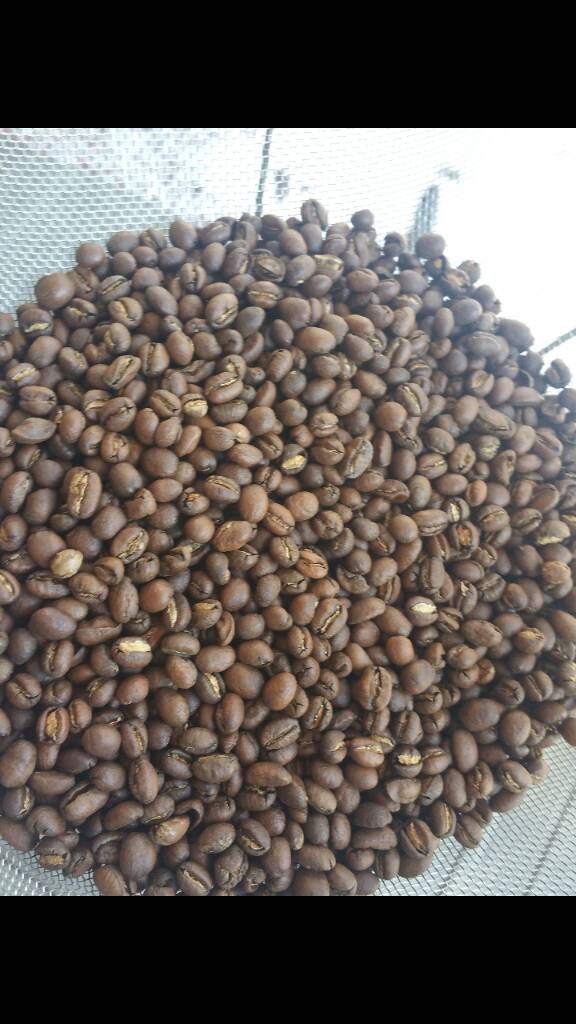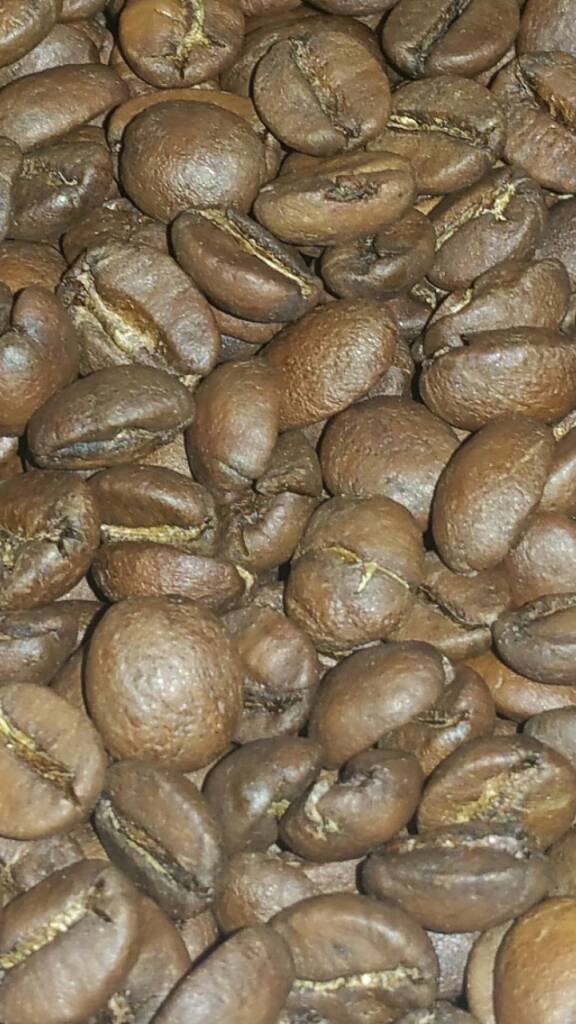HarborTownBrewing
Well-Known Member
Heck, you are just breaking that in!!!Hmm. Anyone interested in a Behmor 1600+ that has been used to roast 167lb of coffee in the last 4.25 years?

Heck, you are just breaking that in!!!Hmm. Anyone interested in a Behmor 1600+ that has been used to roast 167lb of coffee in the last 4.25 years?
srsly, are they that well made? Makes that new one sound very interesting.Heck, you are just breaking that in!!!
In my experience, yes absolutely. Not a whole lot to them. The key is just to clean it occasionally and not let the electronics overheat.srsly, are they that well made? Makes that new one sound very interesting.
In my experience, yes absolutely. Not a whole lot to them. The key is just to clean it occasionally and not let the electronics overheat.
How many pounds did you roast in yours while you had it?
I'd have to look in my log, which I can't do until Saturday, but I'll try to remember. I have a guess but I may be way off.How many pounds did you roast in yours while you had it?










![Craft A Brew - Safale S-04 Dry Yeast - Fermentis - English Ale Dry Yeast - For English and American Ales and Hard Apple Ciders - Ingredients for Home Brewing - Beer Making Supplies - [1 Pack]](https://m.media-amazon.com/images/I/41fVGNh6JfL._SL500_.jpg)
One pound will roast in around 10 minutes on high, but with cold weather that increases. I think a bm could help?! The machine will help hold some heat too. Also I came across a two bowl method, anyone know about two bowl hg method? You can adjust the heat by raising and lowering the gun. But yeah I think there is some of that at play that you describe. If you love coffee and roasting it becomes clear why people upgrade to expensive and more dialed in machines. The plus side is that the hg is air roasting somewhat? Which I think is what gives the coffee a unique and good flavor. Man, cheers to roasting.Scrappy, I think you hit on the dilemma I've been concerned about as a heat gun roaster. I'm not doing Ethiopian, but the dilemma applies more broadly to whatever I'm roasting: Go too slow and dessicate the beans, or too fast and get a mixture of 1st and 2nd cracks simultaneously. Since I don't have the benefit of temp control and a rotating drum, I try to maintain a constant distance with the gun while stirring continuously to keep the beans consistently hot. I do small batches--1/4 lb. or so, to maintain better control. Tried 1/2 lb. once and it took too long--I baked them.
Not scientific but the best I can do with the tools I have.
Yes, I started this way.Will the popcorn popper method still work on an electric range?
seem like a neat little toy rather than something useful.
Well, that's true. I was thinking along the lines of my current roasting habits, and the fact that it takes me about a half hour to roast a half pound of coffee, including cleanup. (with a break while cooling).its targeted at pro roasters for sampling. its gets praise for it repeatability & app interface to set roast curves. basically a paint by the numbers roast profiler. I've heard you can dial in the RoR in increments of 1* which is pretty awesome.
for me, i like the idea of having a batch done in less than 10 minutes from warm up to roast complete/cooled. i could spend less than an hour & 6+ different coffees roasted which would total 11oz of roasted coffee. you can also copy profiles from other users & get exactly the same result theoretically. So lets say all of us have one & TallDan nails a roast of a coffee we all went in on ... we could all enjoy the same cup. Hopefully this technology gets even better and the price comes down. I think at $500 it would be much more attractive.
Do it. The budget part is hard, as they all seem really expensive. Seems crazy to say, but I got my PIDed Silvia 10.5 years ago, and my only real regret is not increasing my budget back then and getting a HX or double boiler.I’m just jealous of you having an espresso machine @TallDan and the others here. It’s on my list to get but I want to buy the right one for our usage and budget. It may be a while though.
Do it. The budget part is hard, as they all seem really expensive. Seems crazy to say, but I got my PIDed Silvia 10.5 years ago, and my only real regret is not increasing my budget back then and getting a HX or double boiler.
Thing is, that was on the finest setting on my rocky, which is what leads me to believe it's the dose, not the grind. That or I need to figure out some issues with the rocky. There will be some more playing tomorrow, but that was the only shot I pulled that was that even. I won't post the other videos.^grind appears too coarse but your distribution looks excellent! nice, even pour. i went and pulled a shot after watching that vid
Rancilio "Miss Silvia" with a PID controller (much like those used in RIMS controllers) added for temp management. Mine is an older model with an older PID that is mounted off to the side, but this would be the updated version:Which model espresso machine do you have. I’m not familiar with the PIDed Silvia.
Going off my logs, which sucked the first couple years, this is what I came up with. It might be a little short because it assumes 8oz loads and sometimes I did 12oz.How many pounds did you roast in yours while you had it?
Thing is, that was on the finest setting on my rocky, which is what leads me to believe it's the dose, not the grind
That's a lot of coffee.Going off my logs, which sucked the first couple years, this is what I came up with. It might be a little short because it assumes 8oz loads and sometimes I did 12oz.
After I bought it: No idea. Can't find logs.
2016: 76 lbs
2017: 145 lbs
2018 (jan to June): 56 lbs
So I would guess I probably did 300 to 350 lbs when I had it.
Brand new burrs, less than a month of use. I just came here to post that the result of this messing around in the last few days is going to be a new grinder. I sent messages on h-b about a used macap m7d and mazzer super jolly, but I think I might be more likely to go with the sette or vario in the end. Big question is going to be whether or not to keep the rocky for chemex/french press/technivorm and use the new one just for espresso, or try to get one to do it all.an espresso grinder should be able to choke a machine at it's finest setting. how old are the burrs, are they still sharp? the baratza sette gets great reviews. if i were building a budget kit, i would build it around that grinder. i really like how you can single dose with it right into the portafilter with little to no retention. i'd probably pair it with that Breville that everyone talks about. i hear stories about people buying these things from Kohls for ridiculous low prices & with some easy mods you can get that machine to punch way about it's class & do things similar to a Slayer or La Marzocco GS/3.
you make a valid point about dose though. people often overlook adjusting that rather than adjusting grind. if you enough head space left in the basket - do it up!
I have much less to complain about with the rocky for chemex than for espresso. That leads me more toward a dedicated espresso grinder. However, something as large as the SJ or m7d isn't going to be a great fit on my countertop, and would probably have to live on the other side of the kitchen from the silvia, which would be pretty inconvenient. The baratza grinders would fit without an issue. Based on reviews online, I'm led to believe that the sette 270, vario (ceramic), forte (ceramic), and SJ are all in the same ballpark for espresso, which would seem to make the vario a clear winner for versatility and price. The used m7d would be a clear step up for espresso, but nobody even talks about using it for any other brewing method.I put the steel malkoening burrs in my Vario. It does great for espresso (never even tried the ceramic burrs but I'm guessing they'd be much better). I use it mostly for pour over in the Chemex; it can grind really well for the able kone, but it's not as great of a grind for the paper Chemex filters as I had gotten out of the Baratza Encore. I'm guessing if I messed with the calibration a bit I could get it right but it's just fine the way it is now.
I had my heart set on the Sette but after talking to Baratza it just didn't sound like a good multi purpose grinder. People seem to love it as a single purpose espresso grinder but it's not great for Chemex or French press grinds.




